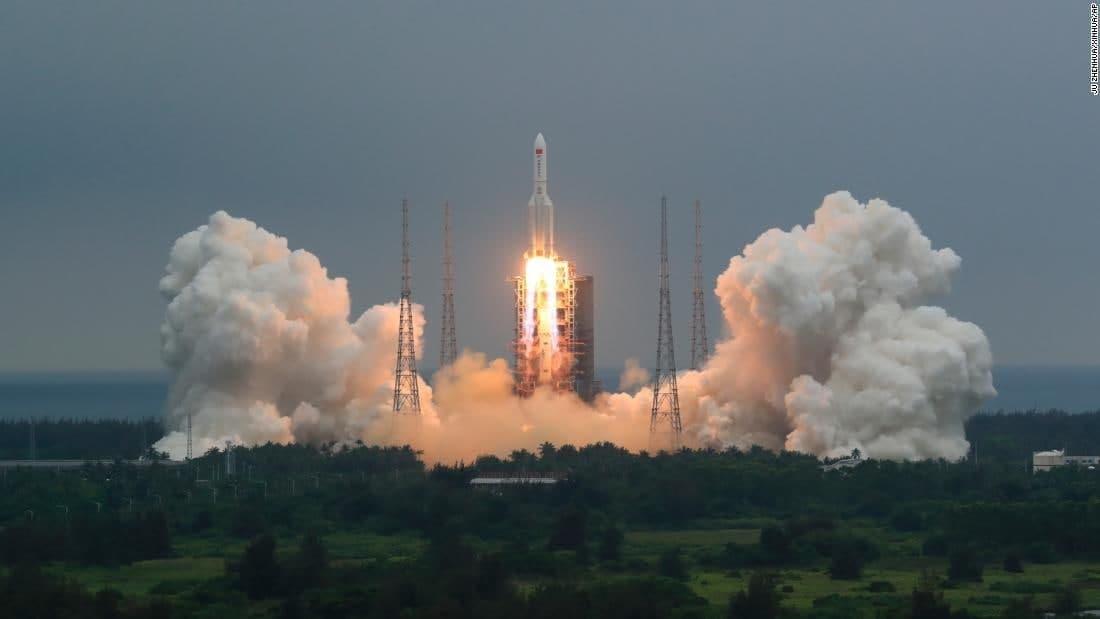WASHINGTON, May 5 (Reuters) - Remnants of a large Chinese rocket launched last week are expected to plunge back through the atmosphere this weekend in an uncontrolled re-entry being tracked by U.S. Space Command, the U.S. military said on Wednesday.
The Long March 5B rocket blasted off from China's Hainan island on April 29 carrying the Tianhe module, which contains what will become living quarters for three crew on a permanent Chinese space station. The Tianhe launch was the first of 11 missions needed to complete the station. read more
The rocket's exact point of descent into Earth's atmosphere as it falls back from space "cannot be pinpointed until within hours of its reentry," which is projected to occur around May 8, Space Command said in a statement posted online.
Harvard-based astrophysicist Jonathan McDowell said potentially dangerous debris will likely escape incineration after streaking through the atmosphere at hypersonic speed but in all likelihood would fall into the sea, given that 70% of the world is covered by ocean.
There is a chance that pieces of the rocket could come down over land, perhaps in a populated area, as in May 2020, when pieces from another Chinese Long March 5B rocket rained down on the Ivory Coast, damaging several buildings, though no injuries were reported, McDowell told Reuters.
The 18th Space Control Squadron at Vandenberg Air Force Base, about 160 miles (257 km) northwest of Los Angeles, is tracking the spent rocket, plotting updates on its location as it descends, the U.S. Space Command said.
The squadron tracks more than 27,000 man-made objects in space, most of them in low orbit, it said.
The Global Times, a Chinese tabloid published by the official People's Daily, characterized reports that the rocket is "out of control" and could cause damage as "Western hype." The situation is "not worth panicking about," it said, citing industry insiders.
"Most of the debris will burn up during re-entry ... leaving only a very small portion that may fall to the ground, which will potentially land on areas away from human activities or in the ocean," Wang Yanan, chief editor of Aerospace Knowledge magazine, was quoted as saying by the newspaper.
McDowell, a member of the Harvard-Smithsonian Center for Astrophysics, said the rocket's main stage core, believed to weigh about 21 tons, would likely break into a shower of debris equivalent to that of a small plane crash and come down in a narrow trail stretching about 100 miles.
Based on its current orbit, the debris trail is likely to fall somewhere as far north as New York, Madrid or Beijing and as far south as southern Chile and Wellington, New Zealand, or anywhere in between, McDowell said.
McDowell said most countries have sought to design spacecraft in such a way as to avoid large, uncontrolled re-entries, since large chunks of the NASA space station Skylab fell from orbit in July 1979 and landed in Australia.
"It makes the Chinese rocket designers look lazy that they didn't address this," he said, calling the situation "negligent."
